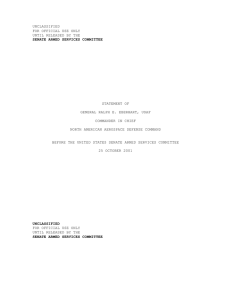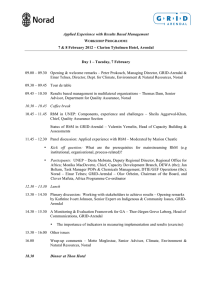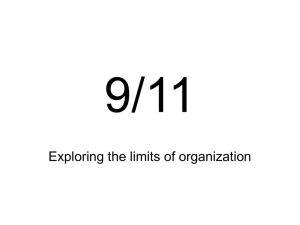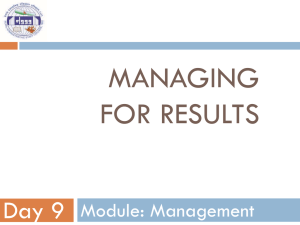STATEMENT OF GENERAL RALPH E. EBERHART, USAF COMMANDER NORTH AMERICAN AEROSPACE DEFENSE COMMAND
advertisement
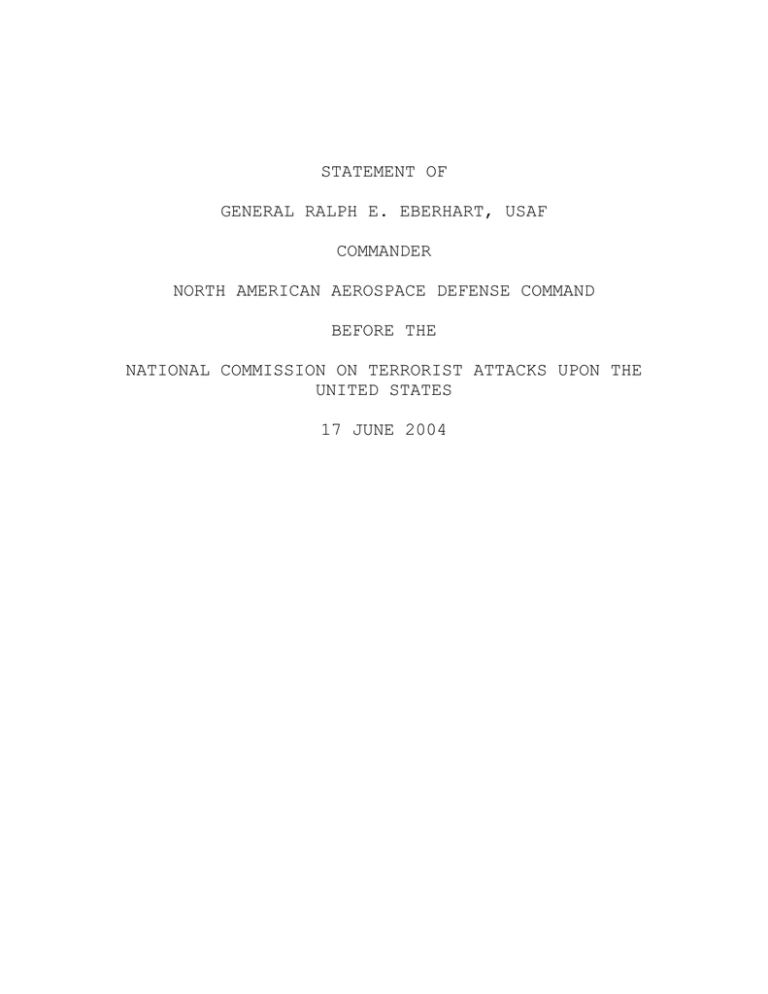
STATEMENT OF GENERAL RALPH E. EBERHART, USAF COMMANDER NORTH AMERICAN AEROSPACE DEFENSE COMMAND BEFORE THE NATIONAL COMMISSION ON TERRORIST ATTACKS UPON THE UNITED STATES 17 JUNE 2004 Chairman Kean, Vice Chairman Hamilton and distinguished members of the Commission: Thank you for the opportunity to appear before you and represent the outstanding men and women of North American Aerospace Defense Command (NORAD). This team of professionals is dedicated to protecting and defending the U.S. and Canadian homelands. We shall never forget those who lost their lives and who were injured during the attacks of 11 September 2001. NORAD Prior to the attacks on our Nation two and one half years ago, our air defense posture was aligned to “look outward” to counter external threats to North America. We considered flights taking off within the U.S. and Canada as “friendly by origin.” Our aerospace warning and control missions were oriented and resourced to detect and identify all air traffic entering North American airspace. We were prepared to intercept potentially threatening inbound aircraft as necessary. 2 During the height of the Cold War, NORAD had over 50 fighters on alert ready to fly air defense missions. As the perceived external threat diminished after the dissolution of the Soviet Union, the number of aircraft to support this mission was reduced. On 9/11, NORAD had 14 fighters on alert at seven sites in the continental United States. In accordance with Department of Defense (DoD) directives in effect on 9/11, NORAD was to monitor and report the actions of any hijacked aircraft, as requested by the Federal Aviation Administration (FAA). We had procedures for potential air hijackings, which were based on the premise that a hijacked aircraft would be used for ransom or political purposes, not as a weapon. On the morning of 9/11, we were conducting a NORAD command post exercise and our headquarters and regions were postured for “wartime conditions.” Six minutes prior to the first attack on the World Trade Center, the FAA informed NORAD of the potential hijack of 3 American Airlines Flight 11. As events unfolded throughout the morning, NORAD responded immediately with fighters and appropriate airspace control measures. Unfortunately, due to the constraints of time and distance, we were unable to influence the tragic circumstances. NORAD After 11 September 2001 The unprecedented, tragic attacks of that morning became the catalyst for dramatic improvements in the defense of our skies--an effort that continues to this day. Immediately after the attacks, armed fighter aircraft flew around-the-clock air patrols as part of Operation NOBLE EAGLE. Within a 24-hour period we had over 400 aircraft airborne and on ground-based alert to prevent additional attacks. Today, NORAD forces remain at a heightened readiness level to counter potential threats to North America. Pilots fly irregular air patrols over metropolitan areas and critical infrastructure facilities, a robust force of fighters is ready to 4 launch, aerial refueling tankers are prepared to support the fighters and E-3 Airborne Warning and Control System aircraft augment our situational awareness. Additionally, we have deployed an integrated air defense system to defend the National Capital Region. In all, over 35,000 mishap-free sorties have been flown by NORAD over the U.S. and Canada in support of Operation NOBLE EAGLE. Since 11 September 2001, NORAD has flown over 1500 active air defense missions--49 involving fighters escorting airliners. only 147 sorties were flown in 2000. By contrast, Over 13,000 men and women are participating in Operation NOBLE EAGLE activities on a day-to-day basis. In the aftermath of the 9/11 attacks, NORAD partnered with the FAA to enhance our ability to monitor air traffic within the interior of the country. FAA and NORAD cooperate on procedures to monitor, track and intercept aircraft that pose a threat. Furthermore, we have worked with the FAA and Canada’s 5 equivalent, NAV CANADA, to improve connectivity and streamline notification processes between those agencies and NORAD regional and sector operations centers. We have established a system of conference calls to facilitate the sharing of information between the White House, DoD, FAA, U.S. Customs Service and law enforcement agencies. These voice networks were created to bring together different levels of decisionmakers from many organizations. By doing so, we increase situational awareness for all agencies, increase the decision-making time available for key leaders and shorten the response time for NORAD air defense forces. The President and Secretary of Defense have approved rules of engagement to deal with hostile acts within domestic airspace, which help ensure the safety of our citizens and the protection of critical infrastructure. They define what we can and cannot do in responding to a situation. 6 Since 9/11, we have conducted over 100 Command-level exercises to test these rules of engagement and to train designated authorities. We continue to refine our procedures and coordination with the Department of Homeland Security, the FAA, civilian law enforcement organizations and other government agencies within the U.S and Canada. We are encouraged by the progress made to improve security at our airports and aboard commercial airliners. Measures such as new passenger and baggage screening procedures, watch lists, heightened terminal security, hardened cockpits, and air marshals are our first and best line of defense. Efforts to secure our airports, aircraft and aircrews have made flying in the U.S. and Canada safer than at any time in history. In addition, our Nation has made significant advancements in intelligence and information sharing. The homeland security and defense communities are working together to move time-sensitive information quickly from intelligence and law enforcement agencies 7 to the decision-makers who are challenged with mitigating various threats. Conclusion The terrorist attacks on 11 September 2001 were a call to arms. Thousands of innocent men, women and children lost their lives while many others were injured. We must not let that happen again. In response, we have strengthened our ability to detect, assess, warn and defend against threats to North America. Surveillance and control of U.S. and Canadian airspace remain critical components of our national security strategy. If NORAD interceptors are called to action, we are prepared to employ this last line of defense for our Nation. We appreciate the 9/11 Commission’s contribution to the safety and protection of all Americans. I am honored to appear before you and look forward to your questions. 8
